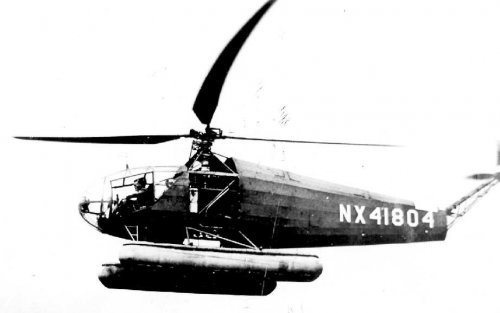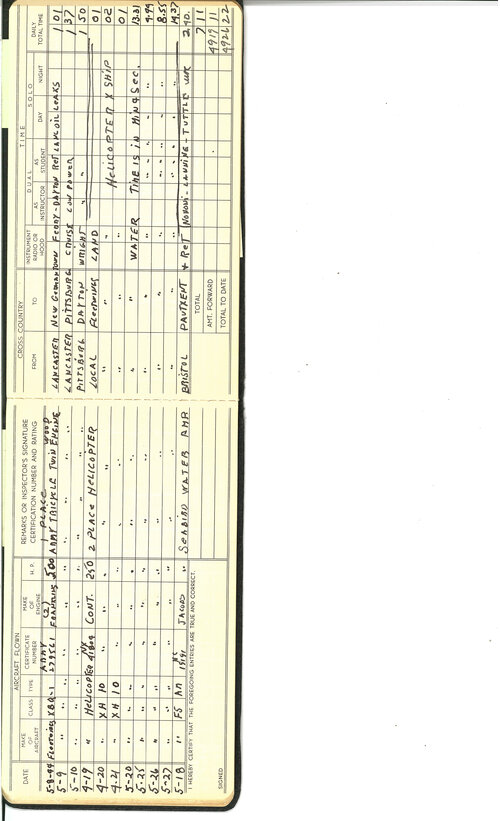- Joined
- 25 June 2009
- Messages
- 14,156
- Reaction score
- 4,365

America's number one shipbuilder, Kaiser Cargo, Inc. (part of the vast Henry J. Kaiser enterprises) entered the rotary-wing field in 1944 through its recently acquired Fleetwings Division. Fleetwings was an old and honoured name in American aviation: at the time it was purchased by Kaiser in 1943 (becoming the Fleetwings Division of Kaiser Cargo Inc., Bristol, Pennsylvania), it was operating two plants producing component parts and hydraulic valves for wartime airplanes such as Corsairs, Avengers, Fortresses, Havocs and Seawolves (All told the company built over $73 million worth of aircraft parts and components during World War II). The plants operated by Fleetwings were never constructed, tooled, or laid out for the production of entire airplanes in quantity, but were established and operated primarily to provide the component parts, such as wings, fuselage sections, tail sections, etc., under subcontract for the types of planes mentioned above.
In addition to all the sub-contracting work, Fleetwings made various, often secret experimental aircraft such as the BTK bomber-torpedo, the BT-12 Sophomore trainer, the PQ-12 piloted drone, the BQ-1 and BQ-2 radio-controlled flying bomb and the cancelled A-39 Army attack. The Kaiser Fleetwings XH-10 Twirleybirdwas designed at Henry J. Kaiser's instigation by a Franklin Institute team led by Ralph H. McClarren, and resulted from five months of strenuous work.
The designation "XH-10" can be misleading since it was purely a company designation (also found elsewhere as plain "Model H-10") and the type was never evaluated nor even tested by the Army Air Corps. Described variously as the "Kaiser helicopter" or the "Fleetwings helicopter" by the press of the time, the XH-10 was conceived to be carried on the deck of Kaiser's merchant cargo ships (his famed "Liberty ships") for anti-submarine protection.
The Twirleybird was a side-by-side cabin design, built of welded-steel tubular construction and powered with a seven-cylinder, radial air-cooled engine mounted with the crankshaft vertical, driving one three-bladed main rotor and a vertical tail rotor for torque compensation. Its most original feature was the fact that it was equipped with rubberized floats instead of wheels.
Two examples of the single-rotor XH-10 are said to have been built, but presumably only the first example was completed and registered (NX41804), being flight tested on a lake in the Bristol park in 1944 and in 1945 by "Slim" Soule. The Fleetwings helicopter program briefly revived Kaiser's hopes for succeeding in aviation, but helicopter technology was still very young in the 1940s, fraught with complex and poorly understood aerodynamic problems, and the project never succeeded, being halted shortly after the end of World War II.
Interestingly, this was not the last involvement of The Fleetwings division with rotorcraft. In the late 1950s, they investigated designs for a turbine-powered four-place observation helicopter for the Army. By 1961, however, defense contracts slacked off and losses mounted, forcing Fleetwings to close its Bristol operations permanently in the late summer of 1962.
NOTE: only one photograph of the XH-10 seems to be available... If anyone has more it would be nice to add it here. Thanks!
Sources:
- American Helicopter, Volumes 13 to 16, American Helicopter Magazine, Inc., 1948
- Aeronautics, Volumes 13 to 14, 1945
- Anything a horse can do: the Story of the Helicopter, Reynal & Hitchcock, 1944
- Aerofiles.com
- Abandoned and little-known airfields: Pennsylvania
- Big Dams and Other Dreams: The Six Companies Story, by Donald E. Wolf
- High Frontier: A History of Aeronautics in Pennsylvania by William F. Trimble





